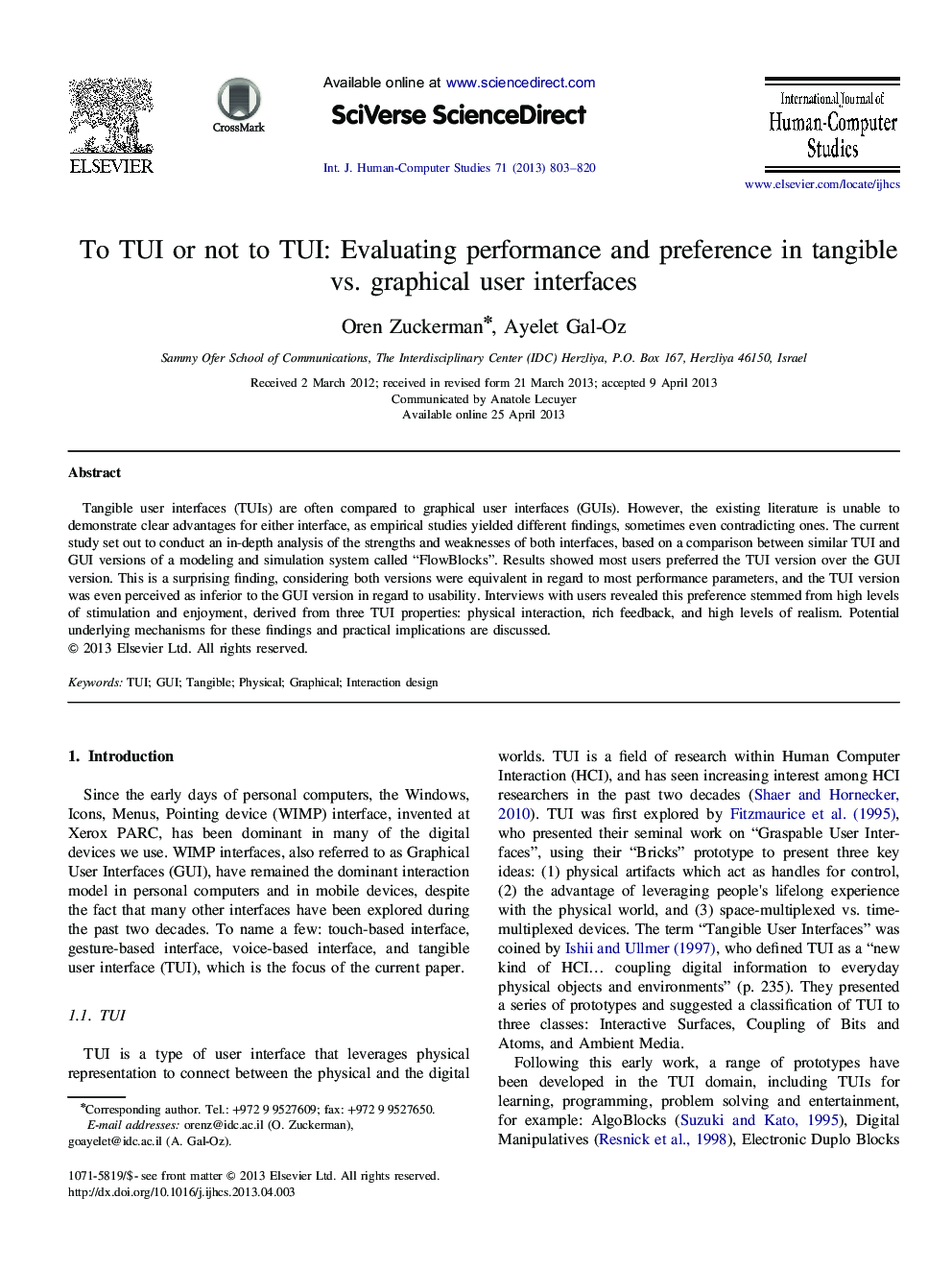| Article ID | Journal | Published Year | Pages | File Type |
|---|---|---|---|---|
| 400878 | International Journal of Human-Computer Studies | 2013 | 18 Pages |
•We compared between similar TUI and GUI versions of a system called FlowBlocks.•Both versions were equivalent in task completion time and performance quality.•The TUI version was inferior to the GUI version in regards to usability.•Most users preferred the TUI version, for being highly stimulating and enjoyable.•Preference for TUI stemmed from physical interaction, rich feedback, and realism.
Tangible user interfaces (TUIs) are often compared to graphical user interfaces (GUIs). However, the existing literature is unable to demonstrate clear advantages for either interface, as empirical studies yielded different findings, sometimes even contradicting ones. The current study set out to conduct an in-depth analysis of the strengths and weaknesses of both interfaces, based on a comparison between similar TUI and GUI versions of a modeling and simulation system called “FlowBlocks”. Results showed most users preferred the TUI version over the GUI version. This is a surprising finding, considering both versions were equivalent in regard to most performance parameters, and the TUI version was even perceived as inferior to the GUI version in regard to usability. Interviews with users revealed this preference stemmed from high levels of stimulation and enjoyment, derived from three TUI properties: physical interaction, rich feedback, and high levels of realism. Potential underlying mechanisms for these findings and practical implications are discussed.
